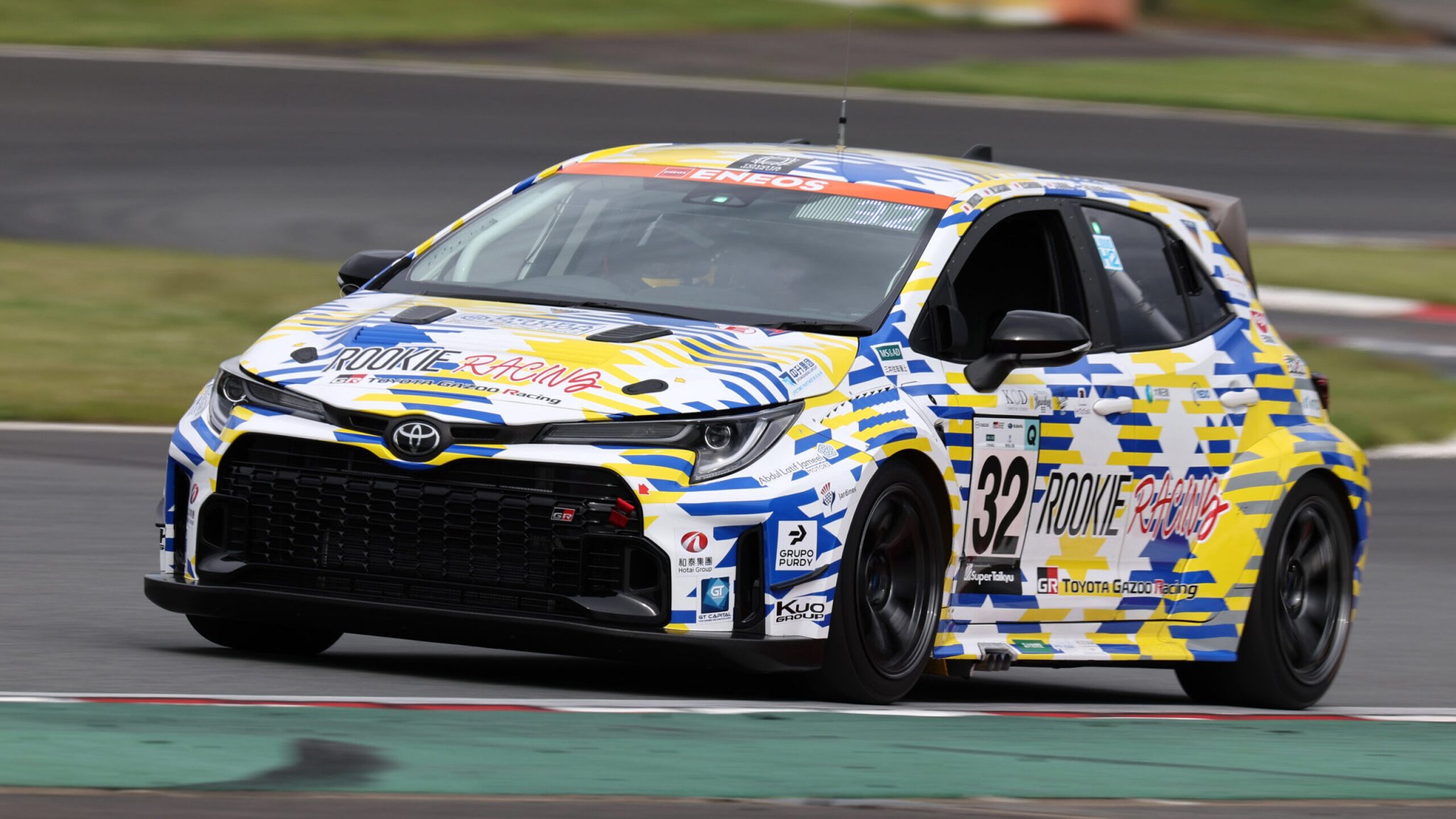

There’s some truth in the thought that modern racing doesn’t promote innovation or creativity. Besides Formula 1, many major series have strict rulesets and homologation, and are more about detail work rather than big, sweeping technological ideas. But in Japan’s premier endurance racing series Super Taikyu, Toyota has been hammering out huge strides in liquid hydrogen propulsion with its prototype GR Corolla.
In an article by Toyota Times, which is Toyota’s official publication, the automaker went into great detail about improvements made in the months since the liquid hydrogen GR Corolla got put into racing service. Toyota hasn’t just been entering the car for exposure of its hydrogen tech; it’s been using the car as a rapid development testbed for liquid hydrogen tech. The car uses a specially modified version of the three-cylinder G16E-GTS used in the production GR Corolla.
There are several challenges to running liquid hydrogen as opposed to a fuel cell. The fuel must be kept extraordinarily cold at -425 degrees Fahrenheit. That fuel has to be delivered by a particularly powerful and heavy electric fuel pump that cannot be lubricated by oil as not to risk the mixing of the super-cool liquid hydrogen and oil. Then, there’s the delicate challenge of refueling a liquid hydrogen tank.


Over several races and months of development, Toyota has made improvements on all fronts. Its first iteration of the fuel system was extra heavy so that it could be more durable, but Toyota has managed to shave 88 lbs out of the pump while increasing durability. At the Fuji 24 hour race, the durability of the old pump proved to be a critical issue. That weight reduction seems feeble in comparison to the 4,210 lb weight of the hydrogen racer, but Toyota is aiming to get lighter than fuel cell hydrogen; a target of less than 3,700 lbs. The standard GR Corolla weighs 3,240 lbs.
Finally, huge strides have been made in refueling. Where fuel cell hydrogen is difficult enough, liquid hydrogen requires a different set of procedures. At first, refueling was slow at one minute 40 seconds because every single valve and safety process had to be observed manually, and because of a small nozzle. With an increased nozzle size and automation of most refueling systems (think in-tank valves and check valves), refueling time is now under a minute.
Toyota says this development contributes directly to their intention to bring a liquid hydrogen-powered car to market. But even if this goes nowhere, it’s cool to see innovation and pioneering in pro-am level touring car racing again. Best of all, this hydrogen race car makes noise.
Got a tip? Email tips@thedrive.com